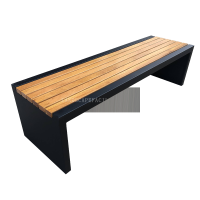Welcome to the website for landscape facilities products and knowledge.
What are the key differences between landscape chairs designed for dynamic versus static outdoor environments?
When selecting landscape chairs for outdoor spaces, understanding the distinctions between designs suited for dynamic versus static environments is crucial. Here’s a breakdown of the key differences:
1. Material Durability:
- Dynamic Environments (e.g., parks, beaches): Chairs must withstand frequent movement, weather changes, and high traffic. Materials like powder-coated aluminum, marine-grade polymer, or rust-resistant steel are ideal.
- Static Environments (e.g., patios, gardens): Chairs prioritize comfort and aesthetics, often using teak, wicker, or cushioned fabrics, as they face less wear and tear.
2. Design Flexibility:
- Dynamic: Lightweight, stackable, or foldable designs for easy storage and transport. Ergonomic shapes may be simpler to accommodate mass use.
- Static: Heavier, fixed designs with intricate details or plush cushions for prolonged relaxation.
3. Maintenance Needs:
- Dynamic: Low-maintenance, easy-to-clean surfaces to handle spills, sand, or dirt.
- Static: May require regular upkeep like varnishing or cushion cleaning but offer higher visual appeal.
4. Anchoring and Stability:
- Dynamic: Often feature weighted bases or anchoring systems to prevent tipping in windy or crowded areas.
- Static: Rely on sturdy construction but rarely need additional anchoring.
5. Cost and Longevity:
- Dynamic: Higher initial investment due to rugged materials, but longer lifespan in harsh conditions.
- Static: Lower upfront costs but may need replacement sooner if exposed to dynamic conditions.
By matching chair features to the environment’s demands, you ensure both functionality and longevity in outdoor seating solutions.
Related search:

Recommendation
Modern Stainless Steel Begonia Wood Park Chair Outdoor Courtyard Leisure Sun Protection Bench Long Seat